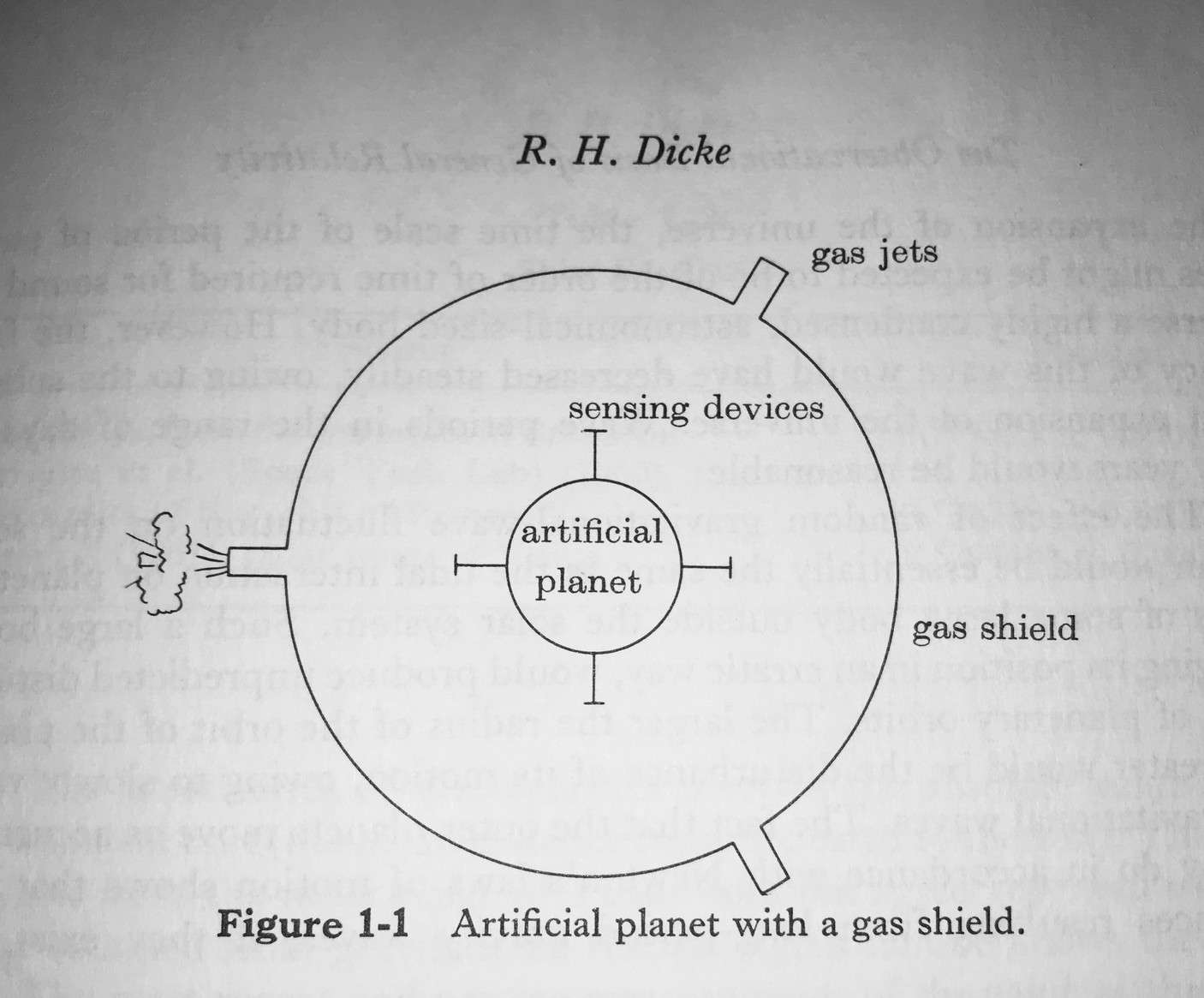In a 1963 article by Robert Dicke ("The observational basis of general relativity"), there is a reference to a concept for a gravitational experimental device in the form of a big ball surrounded by a shell that can move on its own, so as to shield the ball's trajectory from non-gravitational interferences like the interplanetary medium
The description is given as
An example of a space experiment that might improve these distance measurements is an artificial planet surrounded by some gas shield to eliminate gas drag and light pressure difficulties that would interfere with the gravitational orbit. A radar technique could then be used to determine the distance to this device with great precision. This would give us precise orbital data for both the earth and the planetoid. The gas-shield technique has been independently suggested by a number of people, probably first by M. Schwarzschild. His suggestion is to surround a small artificial planet with a hollow spherical shell equipped with small gas jets as in figure 1-1. When the artificial planet gets near the wall, the gas jets are turned on by a servomechanism to compensate the drag and to keep the shell from touching the inner sphere. In this way the artificial planet moves on a proper planetary orbit, not being influenced by radiation pressure and gas drag."
There are however no bibliographical references to this proposal. Nothing in the bibliographical references of the paper, nothing that I can find in Martin Schwarzschild's bibliography (I assume that M. Schwarzschild is Martin Schwarzschild, Karl Schwarzschild's son), nor is there much to be found looking for the notion of an artificial planet in general relativity testing, nothing about that specific design anyway[1][2].
What could this be a reference to?
